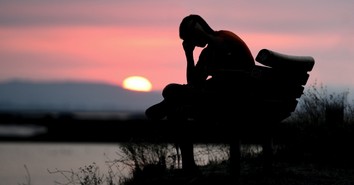How to Get Your Digital Kids Outdoors

Like many parents of today, I practically grew up outside. Unless the weather was horrible (and sometimes when it was!) I was out in the yard, the neighbor’s yard, the park, or the vacant lot. I ran, climbed, explored, skinned my knees, and used my imagination.
It’s natural, then, for parents to cringe when we see our kids (and ourselves) becoming screen junkies.
We know that our childhood is not their childhood, but we still fear that they are missing out.
Does it have to be one or the other? Can we find a balance between the digital and natural worlds?
What if we could even use the technology itself to get them outside?
Here are a few possibilities:
Geocaching
Geocaching, which became a trend a few years ago, “gamifies” the exploration of the outdoors. Participants use a GPS-enabled device (smartphones usually work fine) to find caches that others have left in public spaces. It’s very popular to find them along trails, in parks, and creatively sprinkled throughout your town.
When you find a cache, often a weather-tight container of some kind, you can take one small token out of it and leave a new one behind. The treasures usually aren’t much--erasers, pins, coins, etc., but it’s the thrill of the find, not the value of the booty, that makes geocaching fun. Finders also often sign a log book to say they found it.
Generally, geocachers use the Geocaching app to find and record caches during their hunt. Those who placed the cache receive notification and comments every time someone finds theirs. My family hid one up the road from us, and we often have just as much fun checking it to see what others have left behind.
Star-gazing
There are few moments that take my breath away like stepping out at night and looking up. We are fortunate to live a little out in the country, and the stars at night can be amazingly brilliant.
God used the night sky to show the childless Abraham that he would be the father of generations to come (Genesis 15:5). Certainly, he can use the same stars to teach us and our children about creation and God’s “clockwork”. The stars can also teach us lessons about our own humility and God’s amazing love. In all this vast universe, He looked down and chose you to love. Wow!
We can further appreciate the heavens by learning more about specific stars, constellations, and momentary appearances of comets and planets. The best apps for this allow users to take the phone outside and show the exact star map for that night. Some also use augmented reality (AR) to show you an overlay of the exact names and shapes of constellations when you point the phone’s camera at the sky.
Suggested apps: Star Chart, SkyView, Sky Safari 5, Night Sky 4
Bird Watching
Yes, it may sound like something old people do while sitting on park benches. But identifying and learning about birds can provide an endless source of lessons about God’s design, including migration, habitats, and animal biology.
You can find bird identification websites to keep open as you go outside to search for as many different birds as possible. You can also use a simple chart or spreadsheet to track your scavenger hunt. A number of apps also provide some great extra features to use during your search.
Some apps are fairly simple guides that include photos and birdsongs for identification purposes, while others allow you to create an account and record your sightings. Many of the apps bring you more relevant information about birds to be found in your immediate area and recent sightings by others using the same app.
Suggested apps: Audubon Bird Guide: North America, Birds Near Me, Merlin Bird ID, BirdsEye, eBird
Recording the Experience
Regardless of the outdoor activity you choose, engage your kids in the experience by knighting them as the official Recorders of the Adventure. Put them in charge (with a lot of guidance!) of capturing everything in photo, video, or audio.
This works even better if you give them an audience. Tell them you want to share the experience with grandparents, for example. What would grandma want to see and know about our time outside today? (Give them some limits, especially on video, or you’ll get everything, including the entire car ride to and from the place in all its mind-numbing detail.)
One word of caution: Check often to make sure they are still living the experience. Kids--and adults--often get so enamored by the photos and videos they’ve just taken that they miss the here-and-now. Viewing and editing need to happen later, preferably on a rainy day.
The simplest method is to use the phone’s native camera app for both photos and video. Editing can happen on the device itself using kid-friendly editors, or you can upload everything to be edited on a laptop.
Suggested apps: Clips, Pixlr Express, Typic Kids, Paper Camera, Photo Editor by Aviary, Animoto Video Maker
Maps
Getting outside as a family doesn’t have to involve going into the woods. The next time you are walking around in a city environment, involve the kids in the task of navigating the city. Not only will it quite possibly reduce the whining of having to walk another block, but they might learn some valuable mapping skills in the process.
Give them specific tasks or routes. “Ok, now get us from here to the John Hancock building.” I suggest doing this in places that are already familiar to you, unless you want this to become a real adventure. Ask them questions along the way about distances, landmarks, compass directions, and other things to show them the relationship between the digital map and the physical world through which they are moving.
The challenge for you as the parent is to strike a balance between the screen and the real world. Be sure they are looking up often and not living vicariously through the screen. One trick? Establish a rule that you can look at the screen or you can walk; you can’t do both. This forces the group to stop and establish their bearing, but also take in the sights while they are walking down each street.
Suggested app: Google Maps (be sure to toggle through street and satellite views for the best experience)
YouTube
YouTube is about to surpass Google as the search tool of choice, especially among kids. Why not steer them in the direction of using their indoor screen time to enhance their outdoor non-screen time?
Have the kids search for activities, experiments, or places to explore nearby. Depending on the age and maturity, you may want to make this its own family activity, as they may need guidance on typing the right search terms. It may take some trial and error to find the best results. Try searching YouTube Kids for fun outdoor activities for kids, or things to do at the park with kids, or outdoor activities in [your city] with kids. You can also Google something like best YouTube channels for outdoor activities with kids.
Suggested apps: YouTube (with parental supervision), YouTube Kids (iOS and Android app)
Just Unplug
This list of tech-enhanced outdoor activities doesn’t imply that the ONLY way to get your kids outside is to let them take a screen. Build in plenty of outside time where no tech is needed or allowed. Go for walk, go camping, play at a park, explore a trail, or build a snow fort in the backyard. All of this can be done without tech.
Insisting on turning off the screens and getting outside has a number of benefits, of course. The time outside teaches them about God’s creation through their exploration of the natural world. The fresh air and sunshine improves attitudes, sleep, and overall health. Their eyes and brains also need the break on a regular basis.
Just as important, they need to learn that there is a time and place for technology in their lives. Sometimes, as in the above activities, the digital and physical worlds can live in harmony and complement one another. Sometimes, we need to choose whether certain tasks are best done on a screen or in person. These are valuable skills that translate into hundreds of different situations they will eventually face.
A final word to parents: Be sure that you are modeling good technology behavior to your kids. With some experiences, show them how to use a smartphone to make activities better. In other situations, leave your phone at home or off and in your pocket when it would detract from the experience. Use connected and unplugged times to demonstrate the power of both. It’s a lesson many kids rarely get a chance to learn from the adults in their lives.
Photo credit: ©Thinkstock
Originally published July 07, 2017.







